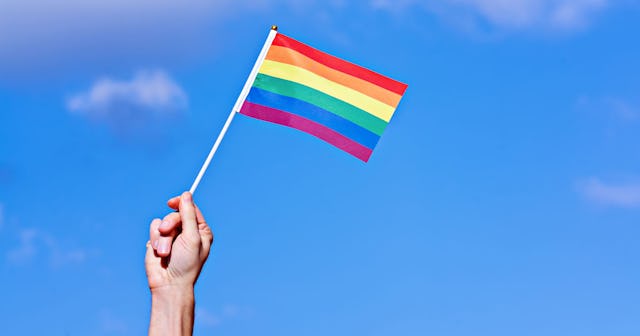Almost 1 In 5 Young Adults Say They're Not Straight

According to a new global survey, younger adults are more likely to identify as transgender or non-binary
Just in time for Pride Month, a recent global survey shows nearly one in five young adults identify as nonheterosexual and noncisgender, pointing to a higher rate of gender and sexual fluidity among Generation Z.
“It’s a global phenomenon,” Nicolas Boyon, senior vice president of public affairs at Ipsos, tells NBC News.
According to the LGBT+ Pride 2021 Global Survey published on Wednesday by market research and consulting firm Ipsos, 4 percent of Gen Z (those born since 1997) identify as “transgender, non-binary, non-conforming, gender-fluid, or other than male or female.” That’s compared to 2 percent of Millennials, 1 percent of Gen X, and less than 1 percent of Baby Boomers.
The survey also states that younger adults are also not only “significantly more likely to identify differently from heterosexual,” but they’re also more likely to say they are equally attracted to both sexes. Overall, 9 percent of those surveyed identified as lesbian, gay, bisexual, pansexual, omnisexual or asexual; and that figure doubles to 18 percent for Gen Z’ers.
Ipsos
More than 19,000 people aged 16 or 18 (depending on the country) to 74 across 27 countries were surveyed between April 23 and May 7.
In addition to surveying the individuals on their gender identity and sexual orientation, the survey showed varying exposure to LGBT+ people and engagement with the LGBT+ community across the world. In the U.S., for example, 57 percent said they have a relative, friend or co-worker who is lesbian or gay; while over in Brazil, 66 percent reported having a having a gay or lesbian relative, friend or colleague; and in Japan and South Korea, that number is far lower — at 7 percent.
Ipsos
To further break it down by country, 2.9 percent of those polled in Sweden identified as gender minorities; in Germany, 2.5 percent; and in Argentina, 2.3 percent.
In India, 17 percent identified as nonheterosexual. The other two countries that topped the list of highest percentages of respondents identifying as nonheterosexual were Brazil with 15 percent and Spain with 12 percent.
“The patterns that we see in the U.S. are definitely not unique to the U.S.,” Boyon says.
Other topics tackled by the survey include respondents’ views on equality and visibility, anti-discrimination laws, adoption rights, equal marriage, and much more; and we highly recommend giving the entire survey a read.
“Transgender, non-binary and gender-expansive people, as well as bi+ people, have existed across time and cultures for centuries — yet they may not always be seen,” says Alphonso David, Human Rights Campaign President, in a statement. “LGBTQ people, specifically non-binary and bi+ people, exist not only in the United States but everywhere. And, as the data makes abundantly clear, our identities are not fads or phases. This Pride month and every month, we should celebrate our communities that are facing threats and oppression, especially transgender, non-binary, bi+ and asexual communities.”